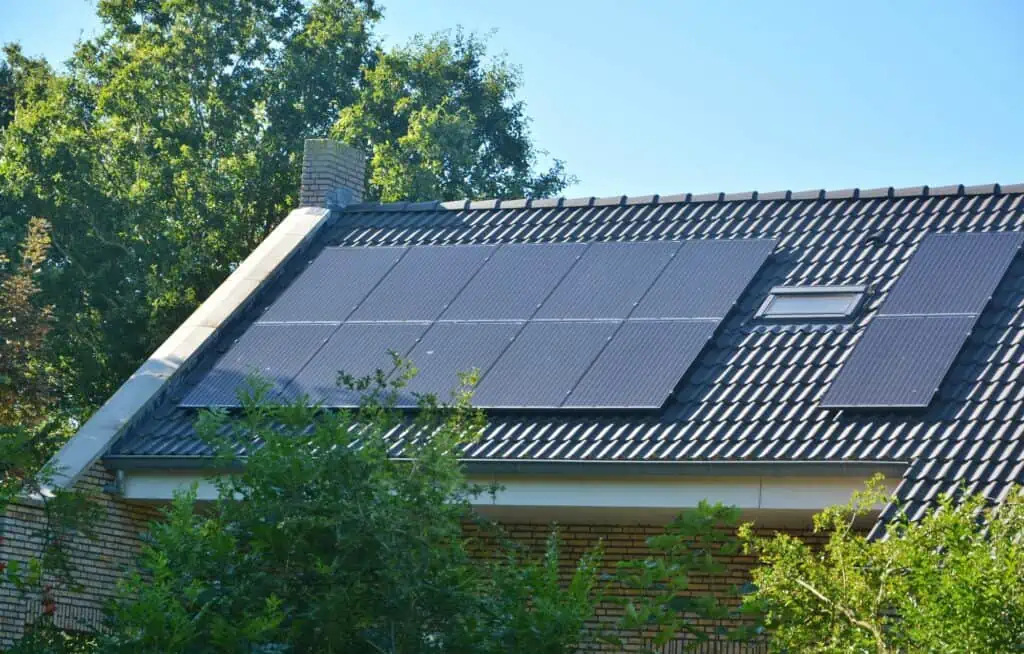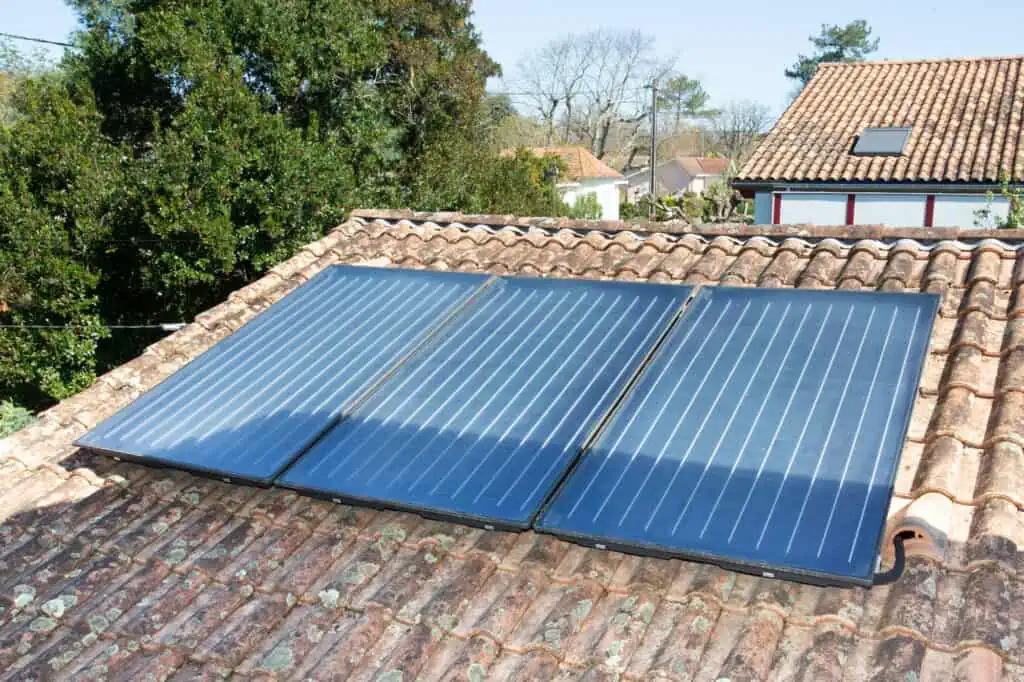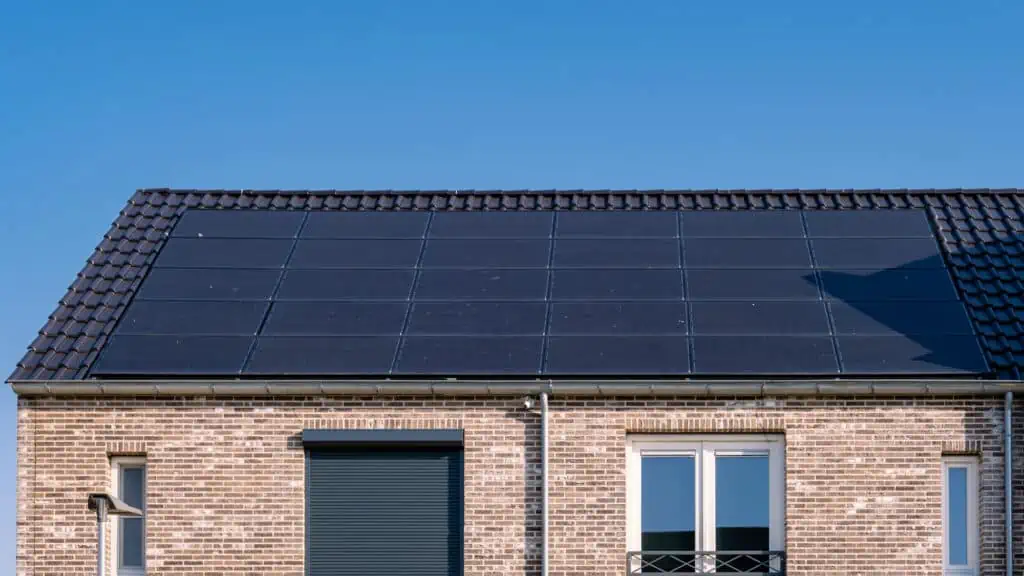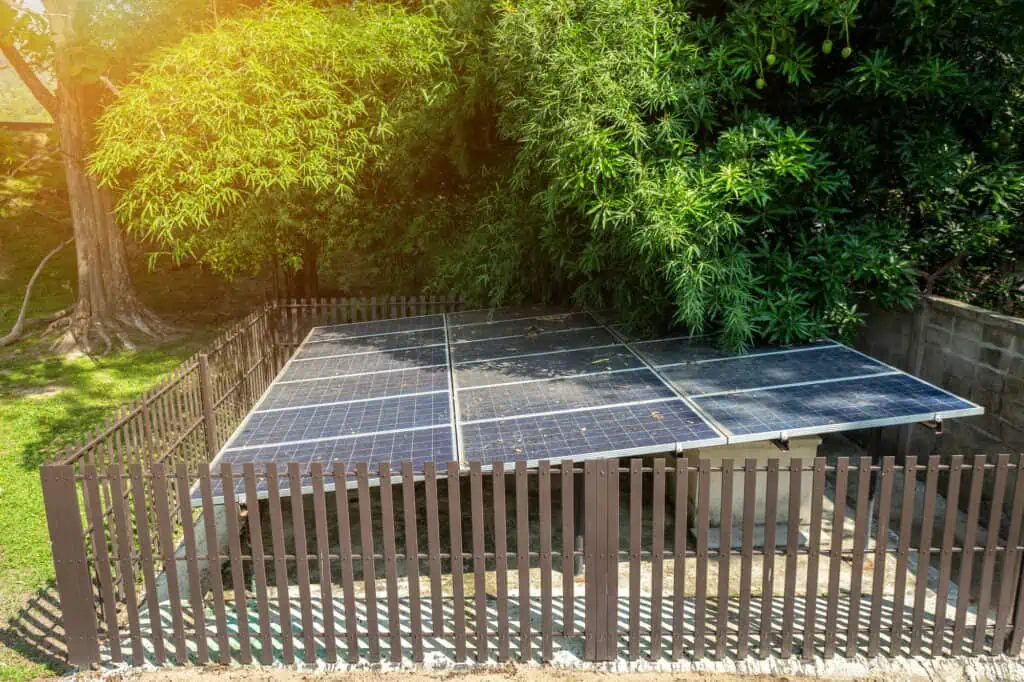Have you ever wondered if solar panels can still generate electricity in the shade? If you’re considering installing solar panels on your property, this question might have crossed your mind.
Well, the answer is not a simple yes or no. There are many factors that can affect the performance of panels in the shade.
Let’s explore the science behind solar panels and how shade can impact their efficiency. We’ll also discuss how to maximize the power output, even when the panels are not in direct sunlight.
Contents
- 1 How Solar Panels Generate Electricity
- 2 The Importance of Sunlight in Solar Panel Performance
- 3 So, Do Solar Panels Charge in the Shade?
- 4 Factors that Affect Solar Panel Efficiency
- 5 How to Maximize Solar Panel Output in Shaded Areas
- 6 Consulting With a Solar Expert
- 7 Installing Solar Panels in Shaded Areas
How Solar Panels Generate Electricity
Solar panels generate electricity through a process called the photovoltaic effect. This process occurs when photons (particles of light) hit the solar cells in the panel and create an electric current.
The photovoltaic cells are made up of layers of silicon, which is a semiconductor material. This means the PV cells can conduct electricity when exposed to light.
When sunlight hits the panel, it creates a flow of electrons that move through the silicon layers, generating an electric current.
This current is then sent to an inverter. This device converts the direct current (DC) electricity produced by the panel into alternating current (AC) electricity. This can then be used to power devices or homes.
The Importance of Sunlight in Solar Panel Performance
When it comes to solar panels, sunlight is crucial for their performance. But what happens when they’re in the shade? Here’s what you need to know about the importance of sunlight.
Why Sunlight Is Important for Solar Panels
When sunlight hits the panel, it excites the electrons in the panel’s silicon cells, causing them to move and generate electricity.
But if the panel is placed in the shade, it will not receive enough sunlight to generate electricity. Even if the panel gets a small amount of sunlight, it will not be enough to generate a significant amount of energy.
So, it is essential to place panels where they can receive direct sunlight for most of the day.
How Shade Affects Solar Panel Performance
Shade can have a significant impact on the performance of solar panels.
One of the main factors that affect their performance is the location and size of the shaded area. If the shaded area is large, it can significantly reduce the amount of sunlight that reaches the panel.
Additionally, if the shaded area is located on the most efficient part of the panel, it can reduce the overall energy production of the solar system.
Another factor that can affect panel performance is the type of solar technology. Some solar panel technologies, such as thin-film panels, are more sensitive to shading than others.
In contrast, monocrystalline and polycrystalline panels are less sensitive to shading. This means they can still produce energy even in partially shaded conditions.
So, Do Solar Panels Charge in the Shade?
Many people wonder if solar panels can still generate power when they are in the shade.
The short answer is yes. But the amount of power generated will be significantly reduced.
Even a small amount of shade can greatly impact the performance of a single panel. For example, the partial shading of just one cell can reduce the energy output of the entire panel by up to 50%.
Factors that Affect Solar Panel Efficiency
Solar panels are becoming a popular source of renewable energy. But many people wonder if they can still produce enough energy when placed in the shade. Here are some factors that affect the efficiency of solar panels.
Amount of Shade
As mentioned above, even a small amount of shaded cells can have a significant impact on the efficiency of solar panel systems.
For example, if a tree or building casts a shadow on even a tiny portion of the panel, it can reduce the overall output of the entire solar system.
This is because the panels are connected in a series. And the energy output of one panel affects the output of the entire string of panels in a system.
Type of Shade
There are two types of shade that can affect solar panels. These can both reduce panel efficiency and compromise their performance.
- Partial shade: This occurs when only a portion of the panel is shaded. Partial shading of a small portion of the panel can already significantly reduce the efficiency of the entire solar power system.
- Complete shade: This occurs when the entire panel is shaded, so it’s even more detrimental. Entirely shaded panels will not produce any electricity at all.
Angle and Orientation of Solar Panels
The angle at which the panels are installed determines how much sunlight they can capture.
The ideal angle for solar panels depends on the latitude of the location where they are installed. In general, the optimal angle for panels is equal to the latitude of the location plus 15 degrees.
For example, if the location is 40 degrees latitude, the ideal angle for the panels would be 55 degrees.
The orientation of panels is equally important. This determines the direction in which the panels face to receive maximum sunlight.
In the northern hemisphere, panels should face south to receive maximum sunlight. In the southern hemisphere, the panels should face north.
But not all locations have the ideal conditions for solar panel installation. In such cases, adjustments can be made to optimize the angle and orientation of the panels.
For example, if the roof of a house faces east or west, panels can still be installed at an angle to capture maximum direct sunlight.
Temperature
As the temperature increases, the efficiency of the solar panels decreases.
This is because panels work by converting sunlight into electricity. And as the temperature rises, the solar cells become less efficient at converting sunlight into electricity.
When the temperature of the panels increases, the voltage output decreases. This is because the increased temperature causes the electrons to move around more, which reduces the voltage output.
The increased temperature can also cause the solar cells to degrade over time. This can further reduce the efficiency of the panels.
Quality of Solar Panels
The quality of solar panels is one of the most significant factors that affect their efficiency.
High-quality panels can convert a higher percentage of sunlight into electricity. In contrast, low-quality panels may lose energy due to internal resistance or damage.
High-quality panels are typically made with monocrystalline silicon. This is a pure and highly efficient material. But they are also more expensive.
In contrast, low-quality panels may use polycrystalline silicon. This material is less pure and has a lower efficiency rate. They are more affordable, though.
Maintenance and Cleaning
Maintenance and cleaning are crucial factors that affect the efficiency of solar panels.
Solar panels are exposed to the elements, including dust, dirt, and debris. These can accumulate on the surface and reduce the amount of sunlight that reaches the cells.
This can further result in a decrease in the amount of energy produced by the panels over time.
To ensure maximum efficiency, it is important to clean the panels regularly. This can be done using a soft brush or cloth and water.
Regular maintenance is also essential. This includes checking the wiring and connections to ensure they are secure and free from damage.
It is also important to check for any signs of wear or damage to the panels, such as cracks or chips.
How to Maximize Solar Panel Output in Shaded Areas
Solar panels are designed to convert sunlight into electricity. But they can still generate power even on cloudy weather or overcast days. Here are some tips on how to maximize panel output in shaded areas.
1. Position Your Solar Panels Correctly
One of the most important factors in maximizing panel output in shaded areas is the positioning of the panels. This is to ensure they receive maximum sunlight throughout the day.
Aside from the angle and orientation of your panels, you should also consider their placement.
If trees or buildings are blocking the sunlight, you may need to reposition the panels. Place them in a different area where they will receive more sunlight.
2. Clean Your Solar Panels
Dirt, debris, and other build-up can block the sun’s rays and reduce the amount of energy your panels can produce.
So, cleaning your panels regularly is crucial to ensure they operate at maximum efficiency.
Fortunately, this is a simple process that you can do yourself.
Begin by using a soft-bristle brush or squeegee to remove any loose dirt or debris. Then, use a bucket of warm water and a non-abrasive soap to gently clean the surface of your solar panels.
Avoid using harsh chemicals or abrasive materials. This is because they can damage the panels and reduce their effectiveness.
It’s also essential to clean your panels at the right time of day. Early morning or late afternoon is best. This is when the sun’s rays are less intense and won’t dry the soapy water too quickly.
We recommend cleaning your panels at least twice a year. But if you live in an area with heavy pollution or dust, you should do it more frequently.
3. Consider Bypass Diodes
When it comes to maximizing panel output in shaded areas, one solution is to consider bypass diodes.
These diodes are essentially electrical switches. They allow current to flow around a shaded or non-functioning solar cell rather than through it.
By doing so, they can help prevent a drop in the overall output of the panel.
4. Use Microinverters or Power Optimizers
These devices work by optimizing the performance of each individual panel rather than the entire system.
Microinverters are small solar inverters that are installed on each panel. They convert the DC power generated by the panel into AC power, which can be used by your home or fed back into the grid.
By installing microinverters, even if one panel is shaded or not functioning properly, the rest can still operate at peak efficiency.
Power optimizers are installed at the module level, but they work similarly to microinverters. They optimize the DC power output of each panel.
This allows the system to perform better in shaded areas or when panels are not all functioning at the same level.
Consulting With a Solar Expert
Solar experts can provide valuable insights and recommendations to help you make the most of your solar panel system.
When consulting with an expert, provide them with detailed information about your shading situation.
They can use this information to determine the best placement and orientation for your solar panels. They can also recommend specific types of panels designed to perform better in shaded areas.
Aside from providing technical advice, a solar expert can help you navigate the financial and regulatory aspects of installing a solar energy system. They can help you understand tax credits and incentives that may be available to you.
In the same way, they can inform you of any local regulations that may impact your installation.
Consulting with a solar expert is essential to ensure your system is optimized for performance and efficiency. Doing so also helps ensure you’re taking full advantage of the benefits of solar energy.
Installing Solar Panels in Shaded Areas
Solar panels still generate some energy in the shade. But it’s important to remember that direct sunlight will always be the most efficient way to charge them.
So, if you’re considering installing solar panels, make sure to choose a location with plenty of sunlight exposure.
And if you do happen to have some shade, don’t worry! Your panels will still be doing their part to help the environment and save you money on energy bills.
Learn more about solar power with our other blog articles. Solar Comparison is here to ensure you can make an informed decision when making the switch to solar energy!
Get in touch with us for any inquiries you may have on anything related to solar. Our experts will assist and advise you on the best course of action for your solar-powered devices.




